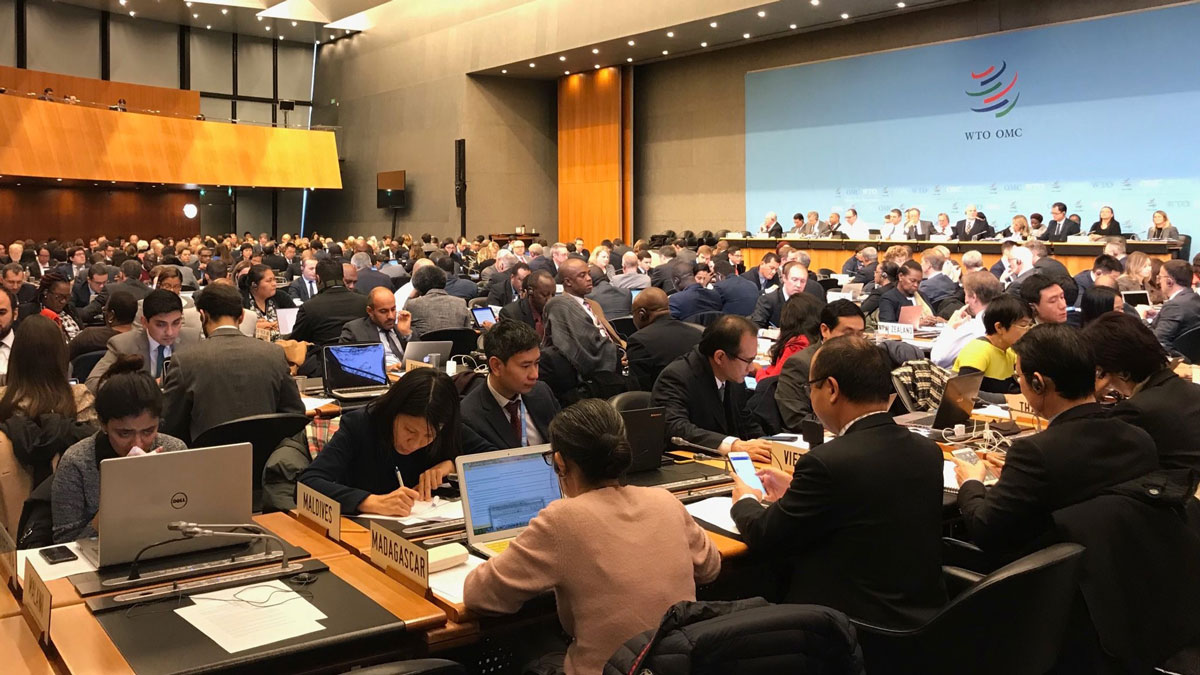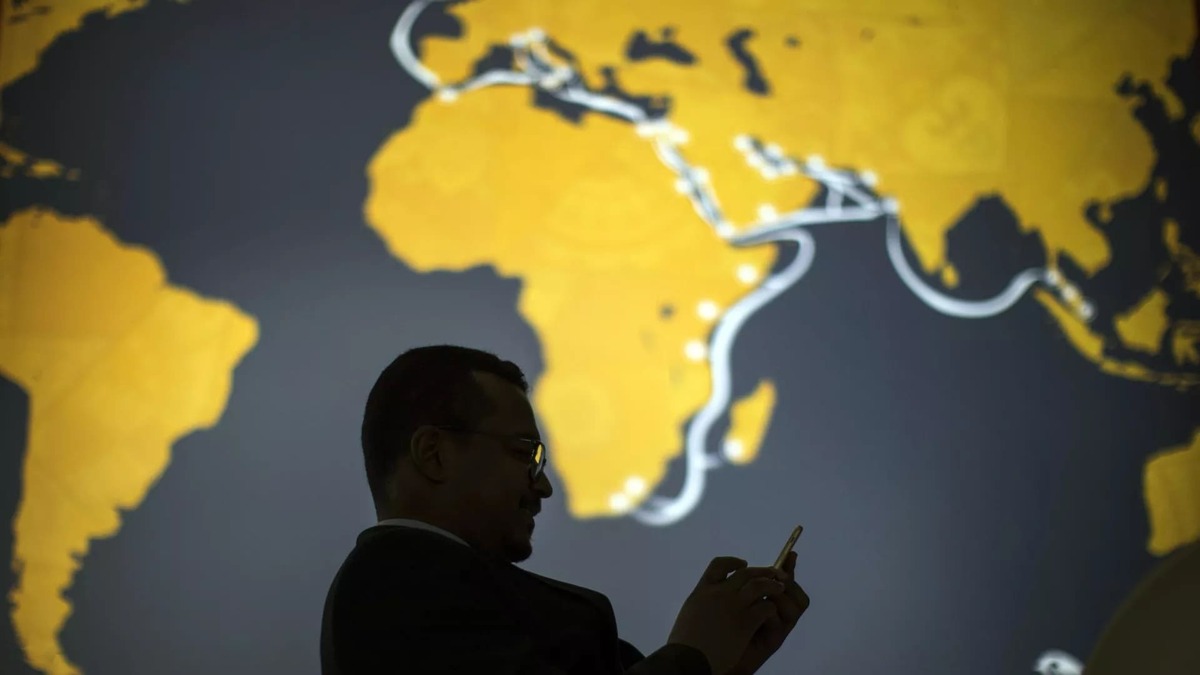In today’s fraught geopolitical landscape, economic fragmentation is a growing and unwelcome risk. For the Association of Southeast Asian Nations (ASEAN), the stakes in mitigating these forces could not be higher. Projected to be the world’s fourth-largest economy by 2030, ASEAN has benefited from over 50 years of serious regional integration efforts to knit the ten member-economies together – but its dynamic outward-facing network of trade relationships, underpinned by the rules-based multilateral trading system, has been equally critical to its success.1 As individual economies, ASEAN members mostly lack economic and political heft. Working collaboratively, ASEAN has the potential not only to boost intra-regional trade but also influence global norms.
Nowhere is this more apparent than in the digital sphere. By 2030, ASEAN’s digital economy is expected to reach an impressive US$1 trillion, up from US$300 million today – but proposed new digital governance architecture in the form of the ASEAN Digital Economy Framework Agreement (DEFA) is projected to double this figure.2 DEFA’s digital trade provisions could increase ASEAN’s services and digital services exports by as much as 45%, equivalent to around 2% of the region’s gross domestic product (GDP), creating nearly 6 million new jobs. The digitalization of supply chains under DEFA could boost goods trade by 74%, or US$326 billion, in new trade flows.3
ASEAN’s vision for a new digital trade framework
How can DEFA deliver on these stunning projections? ASEAN Digital Ministers have lofty aspirations, seeking to achieve a "coherent, harmonized, collaborative and rules-based approach… to establish an open, secure, interoperable, competitive and inclusive regional digital economy".4 They are seeking to use DEFA "to position ASEAN as a pioneering region that forges a legally binding agreement to foster a unified digital economy".5 The challenge will be whether ASEAN can actually get an ambitious, legally-binding, and comprehensive package across the line by its self-imposed 2025 deadline, especially given the geoeconomic context.
Digital trade restrictions: Old wine in new bottles
Arbitrary and discriminatory digital trade barriers of all kinds are rising – including in ASEAN. The Organisation for Economic Co-operation and Development’s (OECD) Digital Services Trade Restrictiveness Index reveals that some of the highest-growth markets, including Vietnam and Indonesia, as well as Cambodia and Laos, are particularly restrictive when it comes to cross-border data flows, the lifeblood of digital trade. Such restrictions can affect businesses’ ability to access markets, add value, and to ensure the integrity of transactions and consumer trust.6
New impediments to digital trade also arise through mismatched standards, systems, and regulatory frameworks – in other words, barriers that are less about protectionism than poor design – and even simply from "regulatory overdrive" and the labyrinthine landscape of emerging digital trade provisions.7 Some ASEAN members are also concerned at the influx of cheap e-commerce goods, and are responding by lowering de minimis limits (below which imported goods do not need to pay tariffs) and increasing import duties.8
A further looming threat, expected to become a reality at the next World Trade Organization Ministerial Conference in 2026, is the ability of countries to impose tariffs on "electronic transmissions" (the definition of the latter is still murky, but is likely to include at least some digital services) – the so-called "e-commerce moratorium". Leading ASEAN economy Indonesia is one of the key proponents for new tariffs.9 Analysis suggests that such tariffs would potentially hit small ASEAN businesses disproportionately hard, and would also have impacts on overall growth.10
By contrast, well-designed digital trade rules, complemented by structured cooperation and knowledge-sharing among trading partners, can reduce barriers and frictions, enhance the predictability of market access, minimize compliance costs, and boost the confidence of regulators, businesses and investors.11 This is where DEFA could serve as an important testing ground.
Enter DEFA
The DEFA negotiating framework has nine core elements, spanning data flows and data protection, trade facilitation, e-commerce, electronic payments and e-invoicing, digital identities and electronic authentication, cybersecurity, competition policy, emerging technologies, and "talent mobility and cooperation" – the latter a novelty in digital trade provisions, but potentially offering the region greater agility and innovative capacity through leveraging its vast human capital resources.12
ASEAN has a solid record of strategic and sectoral initiatives in the digital economy, including an E-Commerce Agreement – but DEFA represents a step change.13 It could drive greater regulatory alignment and lock in existing good regulation as a benchmark for others in the region, reducing compliance costs and impediments to business. It could also provide the scaffolding for future interoperability of AI, where there is a high risk of a fragmented policy, regulatory and standards landscape, particularly with changes signaled by the new US administration.14 ASEAN Digital Ministers announced in January 2025 that they intended to cooperate more closely in the period ahead on AI policies, governance, laws and regulations, standards, and industry engagement.15 This can be given concrete form through DEFA.
DEFA in the digital trade rules landscape
How does DEFA fit with the broader digital trade rules landscape? As Figure 1 illustrates, the context is of an Indo-Pacific "digital noodle bowl" of overlapping and divergent digital trade agreements and provisions (and one in which ASEAN economies’ own participation could best be described as variable geometry).

The depth, breadth, and ambition of the provisions under these different agreements and cooperation mechanisms vary considerably.
At one end of the spectrum lie deals like the Comprehensive and Progressive Agreement for Trans-Pacific Partnership (CPTPP). The CPTPP, which pioneered high-quality digital trade rules for the region, includes four ASEAN members (with a fifth, Indonesia, formally seeking to accede), and is due for an upgrade.16 It has a relatively narrow scope, including binding rules on data flows and forced data localization (requiring businesses to process and/or store data in-market), personal information protection, trade facilitation, and consumer protection. The CPTPP also includes requirements not to impose tariffs on digitally delivered trade. The ASEAN-led Regional Comprehensive Economic Partnership (RCEP) takes a similar approach, but allows far greater policy space on data governance.
At the other end of the spectrum lie a new breed of digital-first agreements (and similar FTA chapters) that direct the parties to cooperate on a wide range of digital economy issues, alongside core CPTPP- or RCEP-style rules. These "digital economy agreements" have largely been initiated by Singapore, which tends to move faster than others in the region on digital trade. This soft-law approach is a useful way to tackle issues where the economic, legal, and other impacts may not yet be fully understood. At the same time, with only headline commitments, there is scope for unintended new frictions to emerge across different markets.
DEFA as a potential regional bridge
To what extent can DEFA bridge the differences between these regional models? Despite strong political backing within ASEAN, progress is likely to be challenging, particularly in areas where significant regulatory heterogeneity remains, including data flows and forced data location, data protection and privacy, tariffs, and AI guardrails – all unfortunately elements of significant commercial importance.
There may also be a significant stumbling block in respect of tariffs on digitally delivered trade, where Indonesia may object to efforts to include binding rules prohibiting tariffs in DEFA. That said, as noted above, Indonesia has recently formally applied to join the CPTPP, which includes an unambiguous commitment not to impose tariffs on electronic transmissions, including content transmitted electronically – so perhaps some flexibility is in prospect.17
Meeting in mid-January, ASEAN Digital Ministers noted that they "recognised issues on digital divide, cross-border data flows, cybersecurity, and the rapid pace of technological change continue to collectively present regulatory obstacles." They further acknowledged that "ensuring the protection of sensitive personal information will only become more critical as we can build a more secure, innovative, inclusive digital economy that benefits the ASEAN businesses, consumers, and societies."
It is not immediately clear how these divergent positions can be bridged. For some topics at least, such as tariffs or forced data localization, the issues have been well-canvassed, and it may be hard to shift ASEAN away from the extensive policy space and flexibilities built into RCEP and similar agreements. Disparities in infrastructure, regulatory settings, and economic interests create fundamental challenges for harmonized rules. For other issues, such as AI, the landscape is in a state of flux which may act as a disincentive to ASEAN to stake out definitive positions at this stage.
All of this may call into question the ambitious timetable that ASEAN has set itself. ASEAN agreements have often taken longer to conclude than the two years to which the DEFA aspires. Less economically advanced ASEAN economies, and those with large informal sectors, will also need to build capability to ensure that the benefits of digital transformation can be widely shared – which is also likely to push out the implementation timetable.18
DEFA’s importance, despite the challenges
For all these challenges, the DEFA initiative remains critically important. Efforts to create more integrated, coherent, predictable and business-friendly trade policy frameworks are hugely valuable: even incremental improvements can bolster not just the digital economy and business opportunities, but also the broader resilience of Southeast Asia and longer-term domestic reform efforts too. DEFA could also pay geopolitical dividends: a club of even small and medium-sized states like ASEAN can potentially provide a counterpoint to the region’s major powers, helping through DEFA to create a new de facto baseline for digital trade rules in the region, and in turn influencing positions in ongoing negotiations at other international fora, such as the finalization of the WTO e-commerce agreement.
***
[1] In 2023, for example, only one-quarter of the US$3.5 trillion in ASEAN goods trade was intra-regional, and intra-ASEAN exports only constituted around 15 percent of the US$1 trillion in services trade. ASEANStats, ASEAN Statistical Highlights 2024, https://data.aseanstats.org/
[2] Boston Consulting Group Study on the ASEAN Digital Economy Framework Agreement, endorsed by ASEAN Economic Ministers in August 2023, https://asean.org/asean-defa-study-projects-digital-economy-leap-to-us2tn-by-2030/
[3] Kati Suominen, ‘How would the DEFA add value to Asia-Pacific trade?’, Hinrich Foundation, September 2024
[4] https://theaseanmagazine.asean.org/article/the-asean-digital-economy-framework-agreement/; https://asean.org/wp-content/uploads/2023/09/Framework-for-Negotiating-DEFA_ENDORSED_23rd-AECC-for-uploading.pdf
[5] https://asean.org/asean-digital-ministers-advocate-for-development-of-secure-innovative-and-inclusive-digital-ecosystem/
[6] OECD Digital Services Trade Restrictiveness Index, https://goingdigital.oecd.org/en/indicator/73. For examples of business impacts, see Kati Suominen, ‘How would the DEFA add value to Asia-Pacific trade?’, Hinrich Foundation, September 2024
[7] Simon Evenett and Johannes Fritz, Emergent Digital Fragmentation: The Perils of Unilateralism, Global Trade Alert: 2022.
[8] https://www.ecommercenext.org/indonesia-to-impose-hefty-import-duties-to-protect-local-businesses-from-cheap-e-commerce-goods/
[9] Indonesia, ‘Indonesia’s Perspective on Customs Duties on Electronic Transmissions’, WT/GC/W/859, December 2022
[10] Badri Narayanan Gopalakrishnan et. al, ‘The Value of Cross-Border Digital Transmissions to MSMEs in Indonesia: Implications for Participation in the WTO E-Commerce Moratorium’, Institute for International Trade, May 2024; WTO, OECD et. al., Digital Trade for Development, December 2023
[11] APEC (2023). ‘Economic Impact of Adopting Digital Trade Rules: Evidence from APEC Member Economies’
[12] https://asean.org/asean-launches-worlds-first-regionwide-digital-economy-framework-agreement
[13] https://www.mti.gov.sg/ASEAN/Association-of-Southeast-Asian-Nations---ASEAN
[14] https://www.reuters.com/technology/artificial-intelligence/trump-revokes-biden-executive-order-addressing-ai-risks-2025-01-21
[15] Elms, D. (2024). ‘Designing ASEAN’s digital trade framework’, Hinrich Foundation, June 2024, https://www.hinrichfoundation.com/research/article/ftas/designing-asean-digital-trade-framework/. On AI, https://asean.org/asean-digital-ministers-advocate-for-development-of-secure-innovative-and-inclusive-digital-ecosystem
[16] https://www.hinrichfoundation.com/research/article/ftas/cptpp-rewrite-rules-of-21st-century-trade
[17] https://www.reuters.com/world/asia-pacific/indonesia-formally-requests-join-trans-pacific-trade-pact-2024-09-25
[18] For an excellent discussion on this, see Dr Deborah Elms, ‘Designing ASEAN’s digital trade framework’, June 2024
© The Hinrich Foundation. See our website Terms and conditions for our copyright and reprint policy. All statements of fact and the views, conclusions and recommendations expressed in this publication are the sole responsibility of the author(s).







